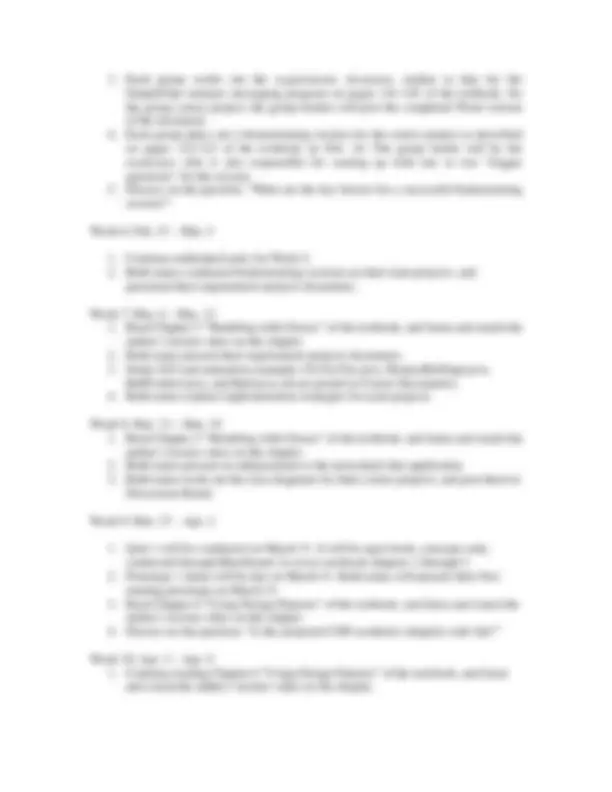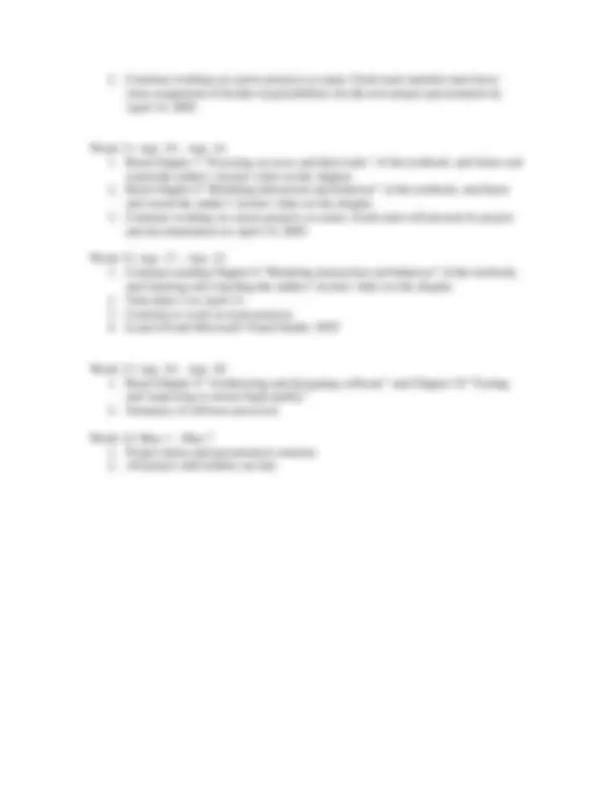




Study with the several resources on Docsity

Earn points by helping other students or get them with a premium plan


Prepare for your exams
Study with the several resources on Docsity

Earn points to download
Earn points by helping other students or get them with a premium plan
Community
Ask the community for help and clear up your study doubts
Discover the best universities in your country according to Docsity users
Free resources
Download our free guides on studying techniques, anxiety management strategies, and thesis advice from Docsity tutors
The weekly assignments and readings for the cs389 software engineering course during the spring 2005 semester. Students are expected to read chapters from the textbook, understand and run java code files, write java programs, and participate in group projects and presentations.
Typology: Exams
1 / 4

This page cannot be seen from the preview
Don't miss anything!



Week 1: Jan. 23 – Jan 29
Week 2: Jan. 30 – Feb. 5
Week 3: Feb. 6 – Feb. 12
allow the users to provide a different port number on the command-line at server/client program startup.
Week 4: Feb. 13 – Feb. 19
Week 5: Feb. 20 – Feb 26
Week 11: Apr. 10 – Apr. 16
Week 12: Apr. 17 – Apr. 23
Week 13: Apr. 24 – Apr. 30
Week 14: May 1 – May 7